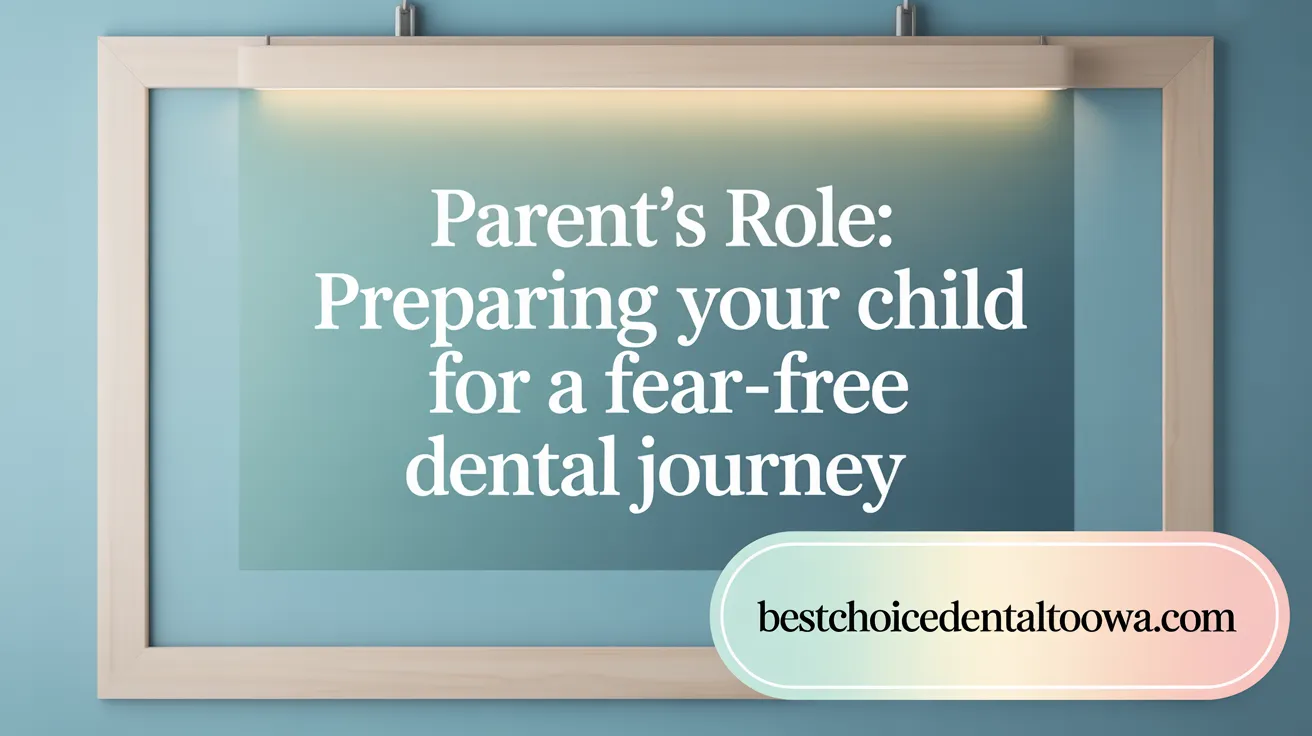Understanding and Managing Dental Anxiety in Kids
Dental anxiety is a common challenge faced by children worldwide, often stemming from fear of pain, the unknown, and unfamiliar dental settings. If left unaddressed, this anxiety can lead to avoidance of dental care, worsening oral health, and long-term phobias. Fortunately, a variety of evidence-based strategies exist to prevent and manage dental anxiety in children, creating positive dental experiences early on that encourage lifelong oral health habits. This article explores proven approaches that help parents and dental professionals ease children's fears and promote cooperation during dental visits.
Early Introduction to Dental Care: The Foundation of Anxiety Prevention

How does the timing of early dental visits influence dental anxiety in children?
Starting dental visits early, ideally before age 2, plays a crucial role in preventing dental anxiety in children. Professional organizations like the American Academy of Pediatric Dentistry (AAPD) and the American Dental Association (ADA) recommend the first dental visit coincide with the eruption of the first tooth or before the child’s first birthday. Early visits help children become familiar with the dental environment, reducing fears of the unknown. Positive or neutral early experiences serve as a protective barrier, making children less likely to develop anxiety even if they encounter negative experiences later on.
What role do regular dental check-ups play in managing dental anxiety?
Regular dental check-ups every 6 to 12 months provide repeated, non-aversive exposures that help children become accustomed to dental care. This habituation process decreases anxiety by making visits predictable and less frightening. Frequent, positive interactions with dental professionals reduce the buildup of fear and help break the cycle of dental avoidance, promoting consistent oral health care and emotional well-being.
Early initiation combined with ongoing regular visits lays a strong foundation for a lifelong positive attitude toward dental health, minimizing anxiety and supporting preventive care from childhood onward.
Behavior Management Techniques: Building Trust and Cooperation

What are effective behavioral strategies to reduce dental anxiety in children?
Behavior management techniques are essential to helping children feel safe and confident during dental visits. One widely used method is the tell-show-do technique. This approach involves explaining dental procedures in simple terms, then demonstrating them before performing the treatment. By setting clear expectations, children become more comfortable with unfamiliar experiences.
Positive reinforcement helps foster cooperation and reduce fear. Praising children for their bravery or offering small rewards like stickers encourages positive associations with dental care. Distraction methods—such as playing movies, listening to music, or using interactive apps—divert attention away from potentially scary stimuli.
Relaxation methods like deep breathing exercises and guided imagery teach children to manage nervous energy. Modeling serves as another valuable tool, where children observe peers or siblings undergoing treatment calmly, helping normalize the experience. Systematic desensitization gradually exposes children to dental sights and sounds over multiple visits, building trust and reducing anxiety.
How does child-centric communication impact a child's anxiety during dental visits?
Child-centered communication plays a crucial role in decreasing dental anxiety. Using age-appropriate language without frightening words helps explain what to expect during treatment. This demystifies the process and prevents misconceptions from fueling fear.
Empowering children by giving them control—like signaling to pause or choosing a flavored toothpaste—builds trust and reduces feelings of helplessness. Friendly, supportive dialogue tailored to the child’s developmental stage reassures them that they are understood and cared for, significantly easing apprehension (source).
Together, these behavior guidance strategies create a welcoming, cooperative environment. This foundation of trust and comfort encourages children to participate willingly in their oral health care, paving the way for lifelong positive dental experiences (source).
Creating a Child-Friendly Dental Environment

Pediatric dental office design
Pediatric dental offices are intentionally designed to be welcoming and comforting. Bright, colorful decor combined with child-sized furniture and equipment helps create a non-threatening atmosphere. Play areas filled with engaging toys allow children to relax and feel at ease before appointments.
Use of toys, colorful decor, and play areas
Toys and interactive play areas serve as distractions and comfort sources, helping to reduce anxiety and fearful behavior. These elements encourage children to associate the dental office with fun rather than fear.
Role of staff behavior and communication
Friendly, calm, and approachable staff play a crucial role in easing children's fears. Staff trained in child-centric communication use positive language, tell-show-do techniques, and maintain open, reassuring dialogue to build trust and security.
Use of audiovisual distractions
Movies, television shows, and audiobooks serve as effective audiovisual distractions during dental procedures. These tools divert children's attention, lowering anxiety and making treatments more tolerable.
Incorporating art and music therapy
Art and music therapy are innovative approaches integrated into dental settings to relax children and encourage creative expression. These therapies provide emotional comfort and positively influence children's dental experiences.
By combining thoughtful design, engaging activities, empathetic communication, and therapeutic distractions, pediatric dental environments significantly reduce anxiety and foster a positive outlook toward dental care.
Parental Role and Home Preparation in Reducing Dental Fear

How can parents help reduce their child's dental anxiety?
Parents play a crucial role in shaping their child's attitude toward dental care. Modeling positive dental behaviors and expressing a calm, confident outlook about dental visits can greatly influence a child's perception. Children tend to pick up on their parents' words and tone, so using positive, non-threatening language about dental visits helps create a sense of safety and curiosity.
Role-playing and educational tools at home
Engaging children in role-playing games that simulate dental visits can familiarize them with what to expect, reducing the fear of the unknown. Using dental-themed books, videos featuring familiar characters, and interactive play allows children to learn about dental procedures in a fun and approachable way. Innovative approaches like interactive dental apps and play-centered environments can also ease dental anxiety effectively.
Use of positive language and honesty
Communicating openly and honestly with children about dental visits, in simple and age-appropriate terms, helps them understand what will happen without exaggeration or frightening details. Avoiding words like "pain" or "hurt" and substituting them with friendly terms like "clean" or "healthy" builds a positive narrative, which supports building positive associations with dental visits.
Involvement in decision-making
Including children in small decisions related to their dental care, such as choosing a toothpaste flavor or selecting a comfort item to bring to the appointment, fosters a sense of control. This involvement reduces anxiety by giving children a role in their care process and aligns with behavioral techniques for anxiety management.
Establishment of oral hygiene routines
Setting up consistent, enjoyable oral hygiene routines at home prepares children for dental care by normalizing it. Using fun cues, songs, or rewards during brushing and flossing helps children associate oral health with positive experiences, making dental visits less intimidating. This practice also supports promoting good oral hygiene and healthy dental attitudes.
Together, these strategies empower parents to create a foundation of trust and comfort that significantly lessens their child's dental fear and anxiety and promotes positive dental experiences.
Advanced Psychological and Therapeutic Interventions
What psychological interventions assist children with severe dental anxiety?
Cognitive-behavioral therapy (CBT) stands out as a powerful intervention for children with severe dental anxiety. This approach integrates behavioral techniques with cognitive strategies to help kids reframe negative thoughts about dental visits and develop effective coping mechanisms (Dental anxiety management strategies).
Systematic desensitization is another widely used method. It involves gradually introducing children to dental-related stimuli while teaching them relaxation skills, effectively reducing fear responses over time (Non-pharmacological interventions for dental anxiety).
Hypnosis and guided imagery aid relaxation by calming the mind and distracting children from anxiety-provoking sensations (Dental anxiety phobia management.
Relaxation training and biofeedback help children become aware of and control their physiological reactions to anxiety, such as elevated heart rate and muscle tension, fostering a sense of control (Management strategies for dental anxiety).
Assessment tools like the Children’s Fear Survey Schedule-Dental Subscale (CFSS-DS) allow dental professionals to measure the intensity of a child’s fear and tailor psychological interventions accordingly, ensuring personalized and effective anxiety management (Childhood dental fear in children aged 7-11).
Sedation and Pharmacological Options: When and How to Use Them
When Are Sedation Options Appropriate for Dental Anxiety in Children?
Sedation is considered suitable for pediatric patients experiencing severe dental anxiety or facing complex, invasive dental procedures. It helps children remain calm and cooperative, ensuring necessary treatments can be completed effectively and safely. For more on the management of dental anxiety and sedation options, see resources on pediatric sedation practices.
Types of Sedation Used in Pediatric Dental Care
- Nitrous oxide sedation: Also known as "laughing gas," it provides mild anxiolytic and analgesic effects, allowing children to relax while remaining conscious and responsive. This is one of the commonly used sedation options for children with dental anxiety.
- Oral conscious sedation: Administered through medication by mouth, this method helps reduce anxiety with a moderate sedative effect. This approach is discussed in studies of pharmacological management of dental anxiety.
- Intravenous sedation: Reserved for cases requiring deeper sedation, it is administered and monitored closely by dental professionals, with attention to safety as highlighted in medical management of dental anxiety.
Safety and Parental Consent
Safety is paramount in using sedation. Prior to sedation, parental informed consent must be obtained after discussing risks, benefits, and procedures. Continuous monitoring during sedation ensures the child's wellbeing throughout treatment. This is consistent with recommended standards in behavioral and pharmacological management of pediatric dental anxiety.
Integration with Behavioral Techniques
Sedation is most effective when used alongside behavioral management strategies such as tell-show-do, positive reinforcement, and distraction. This combined approach fosters positive dental experiences and can reduce reliance on sedation over time. For examples of such combined techniques, see discussions on non-pharmacological interventions paired with sedation.
The Importance of Early Identification and Ongoing Support
How can dental anxiety in children be identified and managed over time?
Dental anxiety in children often reveals itself through various behavioral and physical signs. Common indicators include crying, clinginess, refusal to open the mouth, irritability, stomachaches, headaches, and even nightmares before visits. Recognizing these symptoms early is essential for timely intervention.
Dental professionals play a critical role in assessing anxiety levels. They use subjective tools such as anxiety scales—the Children's Fear Survey Schedule-Dental Subscale (CFSS-DS) and Modified Dental Anxiety Scale (MDAS)—to gauge fear severity. Objective physiological indicators like increased heart rate, sweating, and blood pressure are also monitored during visits to understand the child's emotional state.
Building a trusting relationship through effective communication and gentle behavior guidance techniques like tell-show-do and positive reinforcement helps reduce anxiety. Follow-up care is equally important; repeated positive experiences through regular dental visits help children habituate to dental settings, minimizing future fear.
Parents and caregivers are vital partners in this process. Education about early signs of dental anxiety, preparation strategies, and relaxation techniques such as deep breathing can empower families to support their children effectively. Open discussions and involvement in the child's dental care promote consistent attendance and positive attitudes. Resources on managing dental anxiety in children offer useful guidance.
Combining early identification with ongoing support from dental teams and informed caregivers offers the best approach to managing dental anxiety, fostering healthier dental habits and emotional well-being in children.
Building Positive Dental Experiences for Lifelong Oral Health
Effectively managing dental anxiety in children requires a comprehensive approach that includes early dental visits, empathetic behavior management, supportive environments, and parental involvement. Psychological therapies and sedation play important roles when anxiety is severe. Early identification and ongoing support ensure that children develop positive attitudes toward dental care, enabling them to receive necessary preventive treatments and maintain healthy smiles throughout life. With concerted efforts from parents, dental professionals, and caregivers, dental anxiety can be transformed from a barrier into an opportunity to foster confidence and resilience in young patients.
